


|
About Products Blog Gallery Contact |

|
Home > Blog |
Powder ponderingHow to choose the best water soluble powder nutrientsWater soluble powder nutrients have long been a staple of commercial hydroponic farming. Offering several advantages over their premixed liquid counterparts, powdered dry nutrients are the undisputed preferred choice of professional growers. Powder nutrients can surpass the performance of liquid plant feeds, while at the same time being a more versatile and affordable option. The many benefits of dry nutrients are increasingly recognised by hobby growers, but knowing how to select the best product is key to achieving the best outcomes. This guide outlines the most important considerations to help you make an informed choice. 
Commercial hydroponic lettuce production Cost and quality Powdered hydroponic nutrients are typically more affordable than premixed liquid feeds because they cost less to produce. However, high quality dry nutrients for hydroponics are purer and therefore more expensive than dry fertilisers intended for soil based growing. Be cautious of low cost products that might simply be repackaged soil fertilisers, as these will be less effective in a hydroponic setup. In particular, the Total Nitrogen content of a hydroponic nutrient should be at least 90% Nitrate Nitrogen since other forms (Ammoniacal or Ureic Nitrogen) are unsuitable for soilless cultivation. 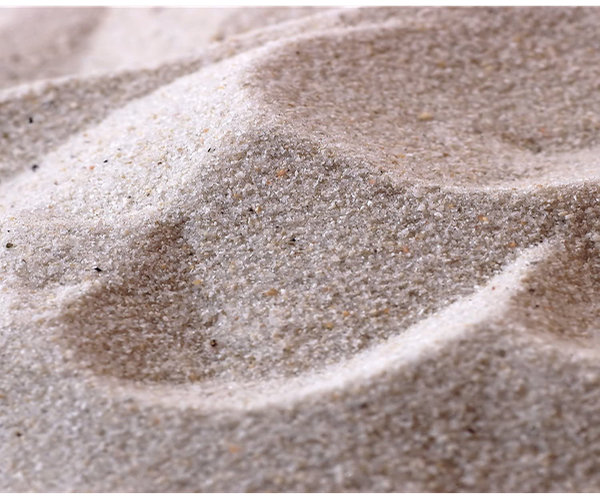
Powdered hydroponic nutrient Nutrient analysis The macro and micro nutrients required for successful and healthy plant growth are Nitrogen, Phosphorus, Potassium, Calcium, Magnesium, Sulphur, Boron, Copper, Iron, Manganese, Molybdenum and Zinc. Helpfully, due to their professional / commercial heritage, dry powder hydroponic nutrients often have a full breakdown of their contents printed on their packaging. A complete hydroponic feed should include all of the essential macro and micro nutrients, because any deficiency in the formula will directly affect plant performance and require corrections that can be difficult to achieve. 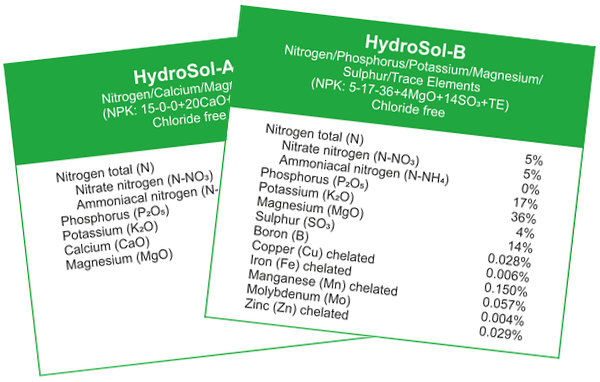
Hydroponic nutrient analysis example Chelated micro nutrients Chelation is a means of organically encapsulating inorganic metal micro nutrients to make them more readily available for uptake by plants. A good water soluble hydroponic nutrient will provide Copper, Iron, Manganese and Zinc in a chelated form. Iron is particularly prone to forming insoluble compounds in hydroponic systems, but chelation prevents this, ensuring the element remains accessible. In the best hydroponic nutrients, multiple types of chelated Iron may be used (usually Iron EDTA and Iron DTPA) for improved nutritional efficiency and stability over a wider pH range. 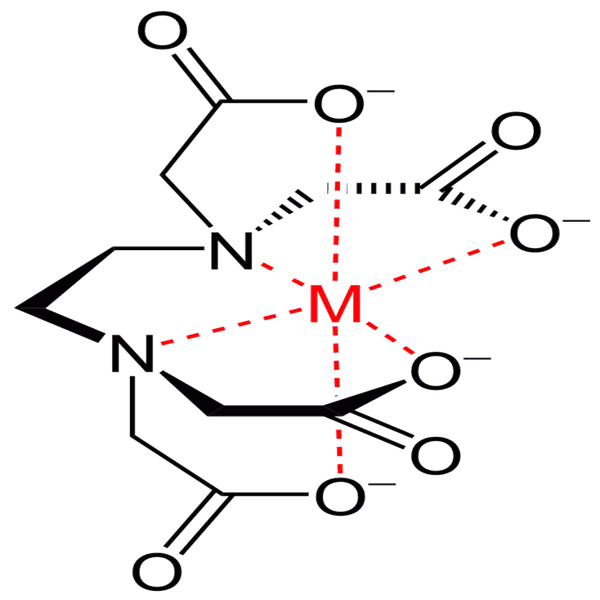
Chemical structure of metal EDTA chelate Sodium, chloride and heavy metals High concentrations of sodium and chloride can be very damaging to plants, while heavy metals pose risks to human health. Because these substances can quickly accumulate to harmful levels in hydroponic systems, especially in recirculating setups, they should be absent from dry nutrient powder formulations or present only in minimal trace amounts. On the other hand, Copper, Iron, Manganese and Zinc, while technically metals, are crucial for healthy plant development and should therefore be present in a complete hydroponic feed. 
Sodium / chloride damaged leaves Plant growth regulators (PGRs) PGRs are natural or synthetic hormones which, when present in even tiny amounts, affect the growth and development of plants by influencing specific physiological processes. While careful and controlled use of PGRs can sometimes be beneficial (for example to promote root growth, shoot growth, leaf growth or flowering), their unintended application can lead to unpredictable and often adverse outcomes. For this reason, the inclusion of plant growth regulator chemicals in base hydroponic nutrient formulations is highly undesirable. 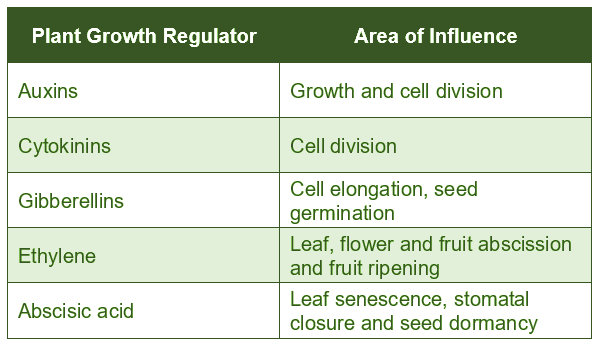
Five major types of PGR Single part, two part or multi part While single part nutrient blends are easy to use, they do not offer the flexibility needed to adapt to different plant growth stages. Multi part formulas, on the other hand, allow for customised nutrient profiles but can be costly and complicated to implement. Two part dry nutrients offer a good balance of ease of use and application versatility. They allow plants to be given a balanced feed throughout their lifecycle, or a high Nitrogen feed during vegetative growth and a high Potassium feed during flowering and fruiting. This adaptability can improve plant health and reduce waste, making two part nutrients a superior choice for most growers. 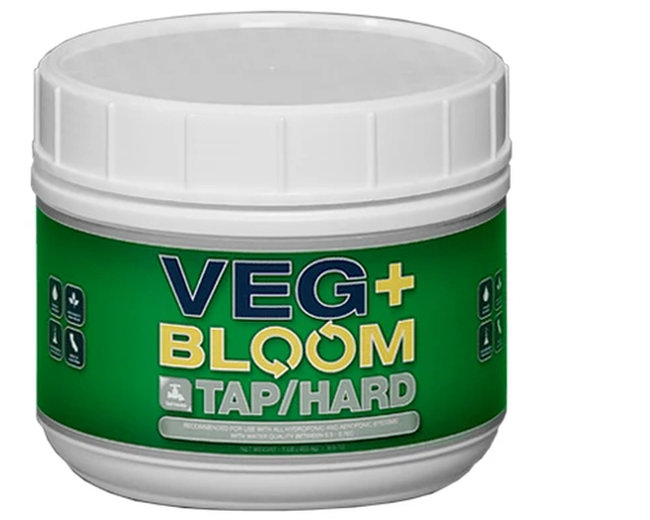
One part dry powder nutrient pH stability The pH of a hydroponic feed solution affects the availability of nutrients for the growing plants. Most water sources are too alkaline for hydroponic use, so soluble powdered nutrients often include components that help acidify the solution. The acidity of the nutrient reduces the amount of further adjustment needed to bring the feed solution pH down to the optimum level. The best products not only help bring the pH into the correct range but also buffer the solution, aiding long term pH stability. A stable pH prevents nutrient lockout and promotes consistent plant growth. 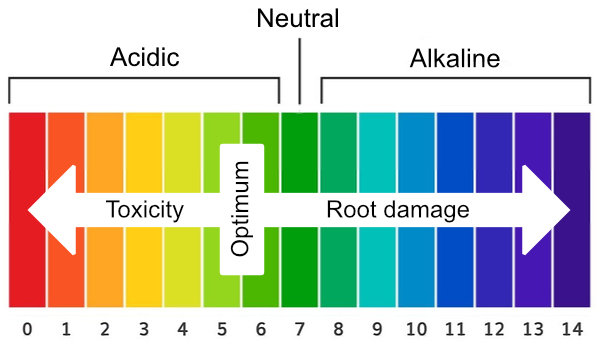
Hydroponic nutrient pH chart Solubility Plants cannot absorb solid particles from the feed liquid, so it is crucial that dry powder nutrients fully dissolve. Incomplete dissolution results in a cloudy suspension, whereas a high quality nutrient powder will dissolve into a clear homogenous solution. Undissolved nutrient salts contribute nothing to plant nutrition and the solid particles will eventually fall out of suspension as precipitate, forming a sediment in the bottom of the feed reservoir. This can gradually build up in irrigation pumps and emitters, causing blockages and equipment malfunction. 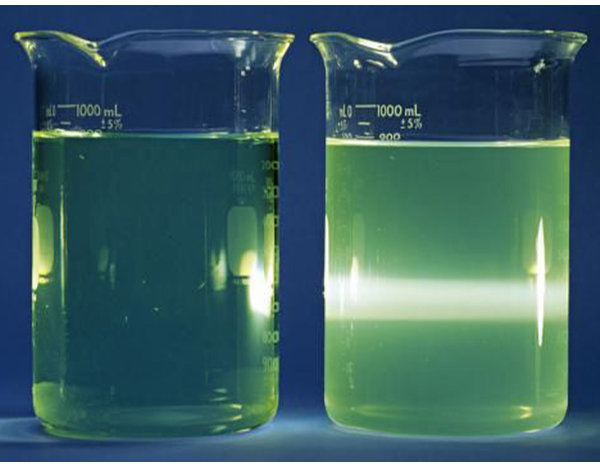 Nutrient solubility comparison Concentration Dry powder fertilisers are significantly more concentrated than liquid hydroponic feeds, but concentrations can vary between brands. When comparing products, it's important to check the manufacturers' recommended dilution rates. Less concentrated powders require less dilution because they contain fewer nutrient salts and more filler material. Highly concentrated powders, which need more dilution, offer better performance and cost efficiency. The highest value for both plant growth and economy will come from products that require the most dilution, as they contain a greater proportion of active nutrients. A smart choice for hobby and professional growers Selecting the right dry powdered nutrients is about balancing the capability and cost of the product with plant needs. By considering factors such as nutrient analysis, purity and pH stability, growers can optimise their hydroponic systems and achieve healthier, more productive plants. For both beginners and experienced growers in the UK, Hydrocrop HydroSol is a compelling choice because it ticks all the boxes. HydroSol is an affordable soluble dry feed offering a complete nutrient profile, ease of use, flexibility and superior performance. |
|
Website and content © Hydrocrop 2021 |